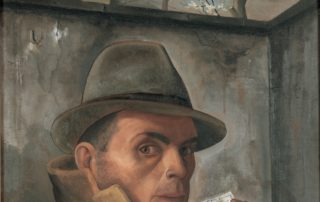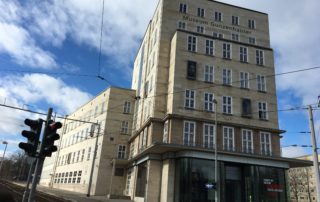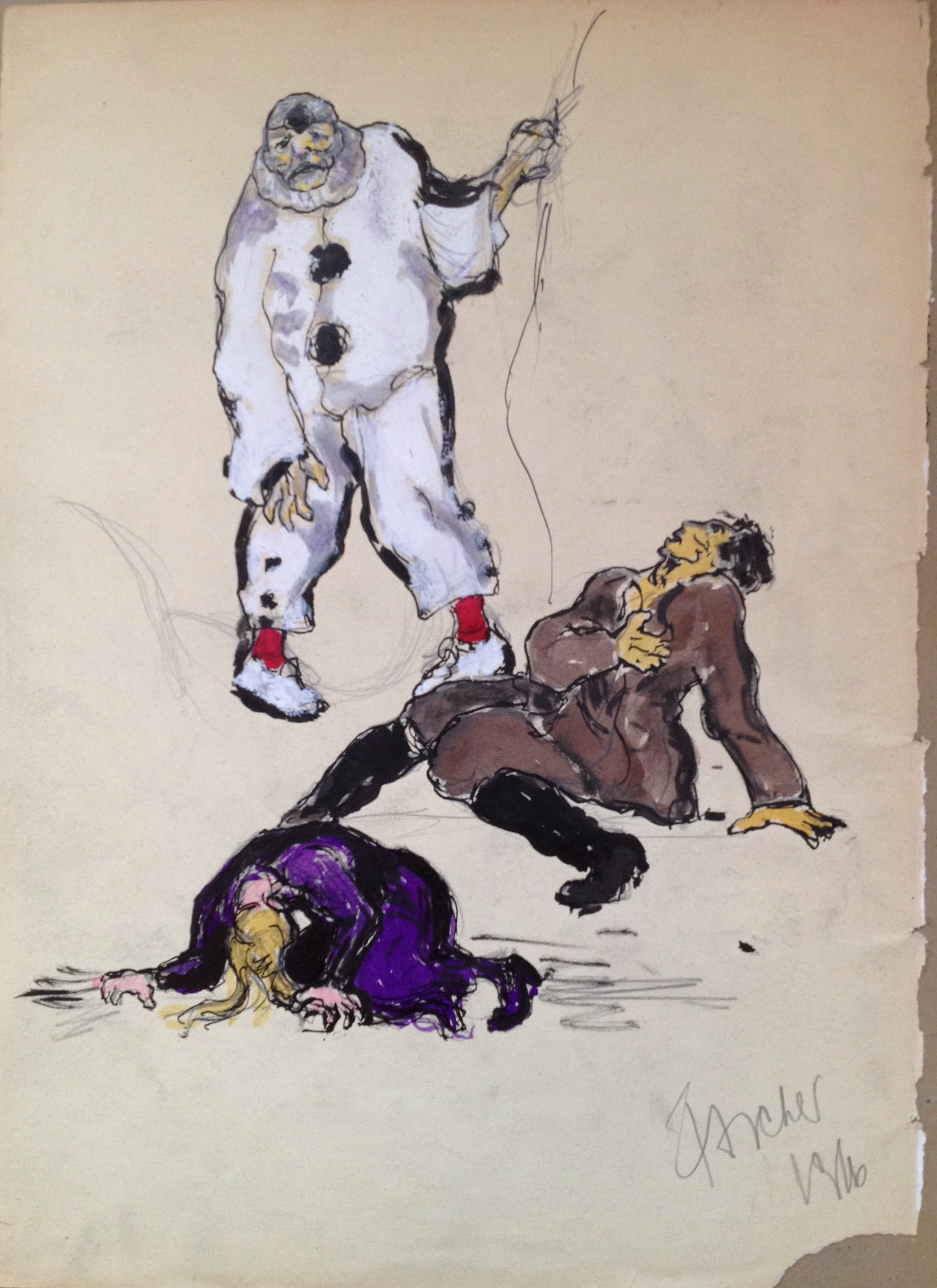Elizabeth Berkowitz2020-10-07T15:08:59-04:00September 16th, 2020|Lectures|
WATCH THE RECORDING OF THIS EVENT HERE. Lecture featuring Anne Sibylle Schwetter, Curator of the Felix Nussbaum Collection in the Felix Nussbaum House in the Osnabrück Museum Quarter, Osnabrück Moderated by Rachel Stern, Executive Director of the Fritz Ascher Society in New York The German-Jewish artist Felix Nussbaum (1904 Osnabrück - 1944 Auschwitz) started a promising career in Berlin around 1930, which ended abruptly when the National Socialists came to power in 1933. Years in exile in Italy and Belgium followed. In 1942 Nussbaum went into hiding in Brussels. The artist's last paintings were created here from June 1943 until shortly before his arrest in June 1944. A little later he was murdered in Auschwitz. Like hardly any other painter [...]
Rachel Stern2020-10-07T15:06:33-04:00August 31st, 2020|Events, Past Events|
WATCH THE RECORDING OF THIS EVENT HERE. Lecture featuring Anne Sibylle Schwetter, Curator of the Felix Nussbaum Collection in the Felix Nussbaum House in the Osnabrück Museum Quarter, Osnabrück Moderated by Rachel Stern, Executive Director of the Fritz Ascher Society in New York The German-Jewish artist Felix Nussbaum (1904 Osnabrück - 1944 Auschwitz) started a promising career in Berlin around 1930, which ended abruptly when the National Socialists came to power in 1933. Years in exile in Italy and Belgium followed. In 1942 Nussbaum went into hiding in Brussels. The artist's last paintings were created here from June 1943 until shortly before his arrest in June 1944. A little later he was murdered in Auschwitz. Like hardly any other painter [...]
Rachel Stern2018-12-04T12:36:20-05:00February 28th, 2017|Newsletter|
Dear Friends, Thank you for supporting us with your interest in our work, reading our newsletters and publications and/or visiting our exhibitions, and - last not least - supporting our work financially. 2016 was the first year that our work started showing, with the participation in the exhibition Verfahren. "Wiedergutmachung" im geteilten Berlin / »Making Amends« Compensation and Restitution Cases in Divided Berlin at Aktives Museum Berlin (October 9, 2015 - January 14, 2016) and Landgericht Berlin/Amtsgericht Mitte, Berlin (September 29 - November 18, 2016) and the long anticipated first ever retrospective with its comprehensive catalogue (link) "Leben ist Glühn" Der Expressionist Fritz Ascher / “To Live is to Blaze with Passion" The Expressionist Fritz Ascher at the Felix-Nussbaum-Haus Osnabrück [...]
Rachel Stern2018-12-03T16:21:23-05:00January 12th, 2017|Exhibitions, Past Exhibitions|
The worldwide first Fritz Ascher Retrospective is on view at the Kunstsammlungen Chemnitz - MUSEUM GUNZENHAUSER from March 5 to June 18, 2017. (website link) The main focus of the presentation at the Kunstsammlungen Chemnitz - MUSEUM GUNZENHAUSER is on the artist's important early masterworks like "Golgatha" (1915), "Bajazzo and Artists" (ca. 1916) and "The Tortured" (ca. 1916). For the first time ever, Fritz Ascher’s “Golem” from the collection of the Jewish Museum Berlin will here be reunited with other works the artist created between 1913 and 1933. The Kunstsammlungen Chemnitz is home to an important collection of German Expressionism, dominated by artwork of the locally founded Expressionist group Brücke and especially Karl Schmidt-Rottluff, who grew up in Chemnitz, along [...]
Rachel Stern2018-12-04T12:38:08-05:00December 7th, 2016|Newsletter|
Dear Friends, As the holiday season is upon us, we at the Fritz Ascher Society had an exciting discovery: the gouache of a “Male Head” to the left appeared at auction in November. Even though it is not signed or dated, we recognize the gouache as a study for Fritz Ascher’s “Golem” from 1916. The features of the “Male Head” appear both in the Golem itself, as well as in the person on the left. The original graphite drawing from 1916 was later painted over with red, green, blue and black ink by the artist himself. He did this most probably in the late 1940s, when the artist repeatedly reworked previously done works on canvas and paper. Fritz Ascher, “Male [...]
Rachel Stern2018-12-04T12:43:56-05:00July 28th, 2016|Newsletter|
Dear Friends, Today we are all about literature. 400 years ago the poet William Shakespeare died (1564-1616). Ever since, the dramatic scenes in his plays have inspired many artists’ brush and pen, like William Turner, Edvard Munch, Max Slevogt and Lovis Corinth. Fritz Ascher drew scenes from Shakespeare’s "King John“, "King Richard II." and "Henry IV." He is almost certainly inspired by numerous performances, especially in Berlin. Most famous was the Austrian theater producer Max Reinhardt, who staged Shakespeare's plays at the "Deutsches Theater" and the "Großes Schauspielhaus". The drawing below shows the stage in the right background; in the foreground a man and a woman sit in a box, the rest of the audience sits below. Stage plays have [...]
Newsletter #6, May 2016
Rachel Stern2018-12-04T12:44:40-05:00May 19th, 2016|Newsletter|
Dear Friends, As we are drawn to spend more time outside in the lovely spring weather, this newsletter is all about Fritz Ascher’s late landscapes that became the focus of his work after 1945. Trees, late 1950s ©Bianca Stock, Munich Frank Auerbach, Mornington Crescent Looking South, 1997 ©Frank Auerbach, courtesy Marlborough Fine Art In dozens and dozens of intense paintings and gouaches intoxicated with color, Ascher turns to nature painting in the broadest sense. Among them are landscapes, woodland scenes, portraits of individual trees, groups of trees, all inspired by hours of walking in the nearby Grunewald. In his catalogue essay accompanying the upcoming Fritz Ascher retrospective, Eckhart Gillen relates the aesthetic practice and behavior of the two painters Fritz [...]
Rachel Stern2018-12-04T12:45:14-05:00February 4th, 2016|Newsletter|
Dear Friends, As I am writing this newsletter, the snow is (still) melting here in New York after one of the largest snow storms in recent history. At the same time, Carnival is in the air - at least for our German friends. What better moment to introduce Fritz Ascher's clowns - a theme that occupied the artist throughout his career. It was certainly no coincidence that Ruggero Leoncavallo's opera "Pagliacci" (Clowns) was hugely popular in Weimar Republic Berlin - especially the performances with the best known Tenor of his time, Enrico Caruso, as Canio. Fritz Ascher, Bajazzo, 1916 In the opera, Canio, the head of a troupe of comedians, finds out that his wife Nedda has an affair with [...]









